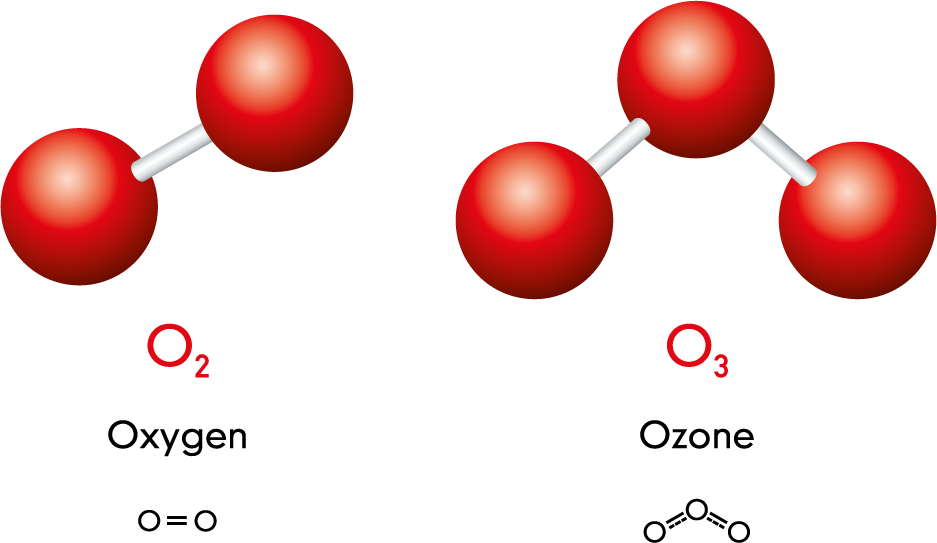What is Ozone and why is it bad?
Estimated Reading Time: 2 minutes
Ozone (O₃) is a gas molecule composed of three oxygen atoms which occur both in the Earth's upper atmosphere and at ground level. There is both a "good" and "bad" Ozone.
Bad Ozone - Ground-level Ozone is an air pollutant that is harmful to breathe and damages crops, trees, and other vegetation. It is the main ingredient of urban smog. The Centers for Disease Control and Prevention (CDC) states that breathing ground-level ozone can be harmful to your health.
Good Ozone - Ozone is produced naturally in the stratosphere. But this "good" ozone layer is gradually being destroyed by man-made chemicals referred to as ozone-depleting substances (ODS). Essentially, Ozone is only good for our stratosphere, which is a layer of the earth's protective barrier.
What are some sources of Ozone?
Tropospheric or ground-level ozone – what we breathe – is formed primarily from photochemical reactions between two major classes of air pollutants, volatile organic compounds (VOC) and nitrogen oxides (NOx). Ozone pollution also comes in the form or contributes to smog or haze. It usually occurs in summer but can be a year-round phenomenon in some southern or mountain regions. Although some stratospheric ozone is transported into the troposphere, and some VOC and NOx occur naturally, the majority of ground-level ozone comes from man-made VOC & NOx reacting.
Image source: American Lung Association
Nitrogen oxide (NOx) and volatile organic compounds (VOCs) are both harmful to breathe and to the environment. Some of the most notable sources include chemical plants, gasoline pumps, oil-based paints, autobody shops, and print shops. Nitrogen oxides primarily result from combustion at high temperatures such as power plants and furnaces or boilers.
How does Ozone affect us?
Individuals with breathing illnesses such as asthma, bronchitis, COPD, etc can notice worse symptoms in environments with high levels of ozone concentrations. Ozone has also been connected to coughing, pain when inhaling, irritation in the lung and throat, and breathing fatigue. Heavy exposures to ozone lead to human health decline. The air we breathe is not designed to have this and can lead to hospital admission if symptoms become severe.
Who is at risk from breathing Ozone?
children and teens
anyone 65 and older
people with existing lung diseases, such as asthma and chronic obstructive pulmonary disease (also known as COPD, which includes emphysema and chronic bronchitis5
people who work or exercise outdoors
Source: American Lung Association
Why do some air purifiers produce Ozone?
An oversimplified answer for Ozone use in an air purifier is that it makes the particles in the air “heavier” (the ozone molecules essentially “attach” to other molecules in the air) allowing the air purifier to draw the air into the air filter more effectively. Other manufacturers choose their products to produce Ozone (i.e. Ozonators) because they claim it is a “natural” way to purify the air, we do not recommend Ozonators to our customers.


